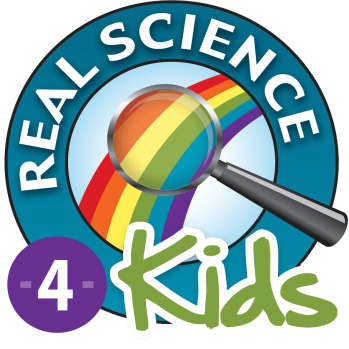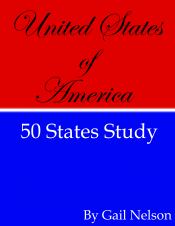
Does it really matter if our foods have artificial food coloring in it? Read on and then I would love to hear what you think!
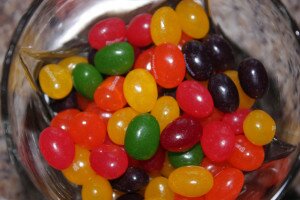
Photo by Holly Hedman
The other day, a friend from church asked if anyone knew of natural food coloring. This made me stop and think for moment. I could come up with a few alternatives to artificial dyes, but that was it. So, this sent me to the computer to do some research because I wanted a decent list of items to use and how to use them since I really never thought about food dyes before. We have truly been blessed with healthy kids and for that I thank God every day, but there are many people that are not as fortunate to be free of food allergies or have children that struggle with food allergies, for this is not an easy life.
[tweetthis]Artificial food coloring has been around since the 1950’s. #homeschool #eatinghealthy[/tweetthis]
Artificial food coloring has been around since the 1950’s.
Decades ago, food manufacturers started using artificial colors, because they were more stable then natural food coloring. In fact, artificial food dyes are made from PETROLEUM (yes, I said petroleum… a by-product of crude oil. Your body can not rid itself of petroleum. This is bad stuff!). The process was approved by the FDA to enhance the colors of processed foods. However, since adding artificial dyes to our foods, people have reported a change in their kids’ behaviors. In the 1970’s, pediatrician Benjamin Feingold was the first doctor who found a correlation between artificial food coloring and behavior. [Source: NPR.org March 30, 2011]
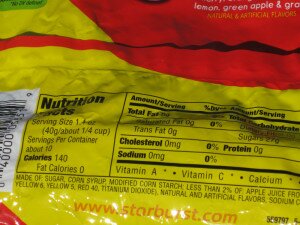
Photo by Holly Hedman
Have you ever looked at the label on the side of a box of food?
There are times when I just cringe when I see all the names of the different dyes (and HFCS and preservatives! Oh, I could continue but I will save that for another article) on a box label. Why do we need dyes in our foods? We DON’T! The only reason why manufactures put it in is to make food look better. So, if we don’t need it and there is evidence that it can cause health issues, then why do manufactures still put it in their foods? This question is pretty big right now. From the research I did, I found out that a couple of years ago, an FDA advisory panel was put together to see if there was a correlation between artificial food coloring and hyperactivity. Their findings were inconclusive but do believe that kids who have ADHD may be sensitive to them and will be doing more studies.
Here is a list of food coloring that are being used today. There used to be over 200, but now the FDA has only approved the following:
| Color Additives Permitted For Direct Addition To Human Food In The United States | |
| Certifiable Colors | Colors Exempt from Certification |
| FD&C Blue No.1 (Dye and Lake), FD&C Blue No.2 (Dye and Lake), FD&C Green No.3 (Dye and Lake), FD&C Red No.3 (Dye), FD&C Red No.40 (Dye and Lake), FD&C Yellow No.5 (Dye and Lake), FD&C Yellow No.6 (Dye and Lake), Orange B*, Citrus Red No.2* | Annatto extract, B-Apo-8′-carotenal*, Beta-carotene, Beet powder, Canthaxanthin, Caramel color, Carrot oil, Cochineal extract (carmine); Cottonseed flour, toasted partially defatted, cooked; Ferrous gluconate *, Fruit juice, Grape color extract*, Grape skin extract* (enocianina), Paprika, Paprika oleoresin, Riboflavin, Saffron, Titanium dioxide*, Turmeric, Turmeric oleoresin, Vegetable juice |
| *These food color additives are restricted to specific uses. | |
**Source: Food & Drug Administration
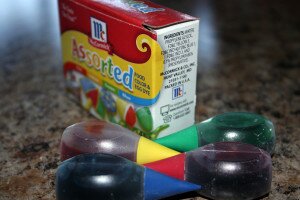
Photo by Holly Hedman
If there is proof that it affects some kids, then why is it OK to have in our foods? It goes back to the old saying, one person can ruin it for all… but I guess that is not the case for artificial food colors, in the USA at least. In the U.K., because so many people took a stand against artificial food coloring, U.K. branch of WalMart switched to using natural food coloring instead. You can buy the same snack bar in the USA and UK. The UK snack bar will have natural food coloring; beetroot red, annatto and paprika extract. Whereas, the exact same snack bar in USA, you will find; Red 40, Yellow 6 and Blue 1. If more people took a stand and demanded the removal of artificial coloring, then maybe the FDA or even the manufacturers will change!
“So, what does this mean for you?”
Well, it depends on you. Do you have a sensitivity or allergy to artificial colors? If you believe you are allergic or have sensitivity to artificial food colors/dyes, you can have an IgG test done by an Allergist. The Feingold Association of the United State has a great website where you can find all sorts information on it; what symptoms to look for, diet program, shopping list, places to shop, scientific studies and more. If you don’t have a sensitivity or allergy to artificial coloring, I still recommend limiting it where you can since it is still a petroleum product. Do your due diligence and research it for yourself and decide if it is worth cutting out of your life completely or not.
Now you are telling me I can no longer have a colorful birthday cake?
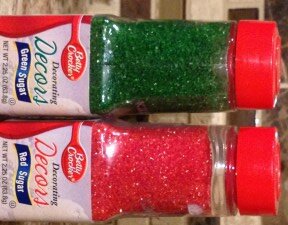
Not at all! If you want to have a colorful birthday cake there are ways you can do that with real, non-artificial coloring. You can use plants, fruits, and vegetables. You can also buy India Tree Liquid coloring. India Tree is plant based food coloring. They even have sprinkles you can use on your cake!
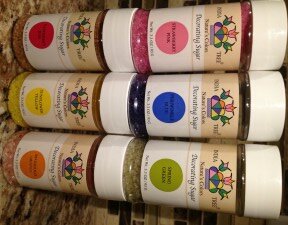
Photo by Holly Hedman
What about my Easter Eggs?
Oh yes, don’t forget about them! Did you know that when you dye your eggs, some of the dye can get on your egg (specially when you dye an egg that has a very small crack). If you have a sensitivity to artificial food coloring you may want to try using natural coloring or fruits and veggies!
Here are a few recipes, if you will, for natural egg coloring! [Source: Diane Hartman]
- Dried powdered spinach will make a yellowish green. Add 1 teaspoon vinegar to 2 tablespoons powdered spinach and 1 cup boiling water
- Dried dark red beets will make a red or pink shade(depending on how much you use.) You can use them in the wet form, if you smash them, and strain the juice through cheese cloth. You can also use dried red beets to make a great pink or red icing(perfect for valentines day) it does not effect the flavor. Strawberry juice or jam also work well for a flavored red or pink icing.
- Red onion skins use very little water, boil and then strain through cheese cloth
- Yellow – turmeric (for Easter eggs 1 1/2 teaspoons turmeric + 2/3 cup boiling water and 1/2 teaspoon vinegar
- Brown dyes – 1 tablespoon instant coffee (or loose tea) 2/3 cup boiling water 3/4 teaspoon vinegar tea and coffee produce different shades of brown, so you might to experiment with this one. For an even different color(darker) brown use, but use cocoa powder instead of coffee
- Red cabbage juice makes a bluish color
- Blackberry juice – reddish blue dye
- Blueberry juice – bluish grey dye
- Violet dyes: 1/2 cup violet blossoms(can be found in the spring) 1 cup boiling water. Allow to stand for three hours, and then strain through cheese cloth. This will make a purple-blue dye
- Lavender – add 1/8 cup lemon juice, it will cause some type of chemical reaction and make lavender color
- Green: Add 1/4 teaspoon baking soda and the dye will turn green, and if you allow it to stand for several hours to overnight, it will turn a dark yellow or orange
- Onion skins –make a deep yellow/gold color
- Beet peelings–dark purply/pink
- Red cabbage–pink
You just have to add a little vinegar to make the colors set.
Was this helpful?
I would love to hear from you! Let me know if you learned something from this article! Please do your due diligence and research food coloring for yourself! You will be amazed at what you find!




 (We earn a small commission when you purchase using these links)
(We earn a small commission when you purchase using these links) 